Hoisting a Symmetric Spinnaker
Go To: Sailing - Techniques and Manoevres
Posted on 03 September 2009 18:32
Once you’ve rigged your symmetric spinnaker onto your boat, you’re ready to go sailing! Whether you’re racing or just having a practise, the hoisting procedure is the same – however – it does differ depending which side of the boat you hoist on.
Whichever side you are hoisting on, it’s important to get the boat sailing as close to downwind as possible without risking gybing the boat, and remember to pull the centreboard or daggerboard up at least halfway – this is the best compromise between stability and sideways resistance. As with an asymmetric, you should be in the hoist/drop zone.
It’s easier to do a leeward hoist – this way, the spinnaker will be protected or blanketed by the jib and mainsail, and will not fill with wind straight away, whereas with a windward hoist, you must feed the sail out and around the forestay to set on the leeward side instead of it just going straight out – however which side you hoist on depends on which side of the boat the sails are compared to the wind. If you are just sailing, you can gybe onto the side for leeward hoist easily enough, but you may not always be able to do this in a race so you should be able to hoist on both sides.
Leeward Hoist
We’ll do the easy one first! Remember in the rigging article we talked about the two spinnaker sheets? One is called the sheet, but the other is actually called the guy – and the guy is the sheet that will be attached to the spinnaker pole, and these both sit on the windward side.
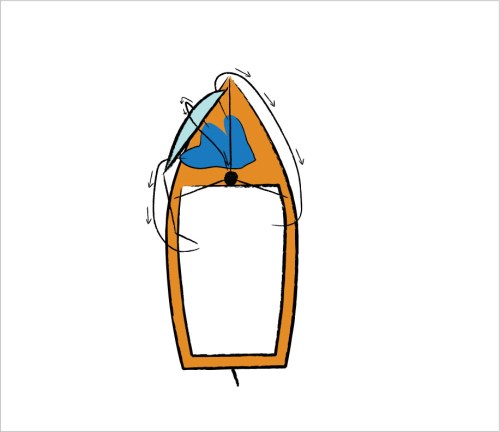
Diagram 1: Leeward spinnaker hoist, the main sail protecting the launch
For a leeward hoist, the spinnaker sheet running down the windward side of the boat will be the guy, and you should feed it into the end of the spinnaker pole. You can then push the pole out over the foredeck, as the guy should then go around the forestay and back across the foredeck to where it’s stowed with the spinnaker in the bag. The sheet will be much tidier, going from the spinnaker in the bag, around the shrouds, into the cockpit.
To hoist, take the pole which should have the guy attached at one end, and attach the other end to the ring on the mast. Adjust the pole uphaul/downhaul initially so the pole is at around a 90° angle to the mast (i.e. it’s pointing out flat). To hoist the spinnaker, the boat should be sailing as close to dead downwind as possible, as the boat will be flatter and everything easier to do.
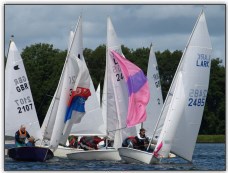
Photo 1. Several boats hoisting spinnakers
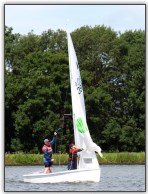
Photo 2. Windward spinnaker hoist
The helm should steer with the tiller between his or her legs, and take the halyard. As the helm quickly hoists the sail (remember it will be protected by the mainsail) by pulling on the halyard, the crew should pull the guy to pull the windward clew of the spinnaker around to the dinghy’s windward side, and then cleat off the guy. Then, the spinnaker can be trimmed with the leeward sheet (see article on flying the spinnaker).
Windward Hoist
The technique is slightly different with a windward hoist, particularly in strong winds. As the spinnaker isn’t protected by the mainsail, it’s important to get it up quicker and not get stuck halfway.
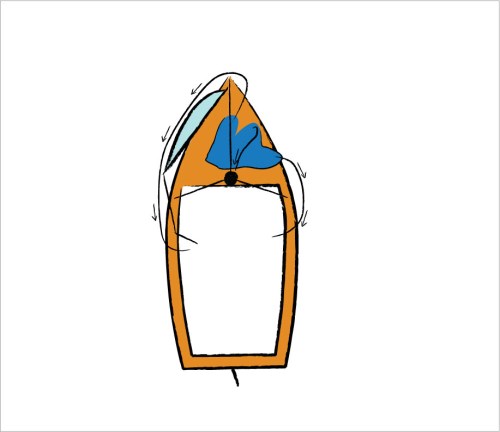
Diagram 2: Windward spinnaker hoist, straight into the wind
The setup is similar to a leeward hoist, except you don’t attach the pole first. As the helm quickly pulls on the halyard to hoist the sail, the crew must throw the spinnaker out the front of the boat to the windward side. Once the spinnaker is up and filled with wind, the crew then takes the halyard off the helm and cleats it off, and then attaches the spinnaker pole first to the guy, then to the mast, and then trims the pole to the correct height.
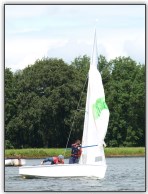
Photo 3. Windward spinnaker hoist
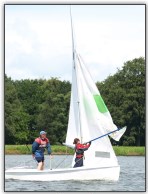
Photo 4. Windward spinnaker hoist
Next, you need to know what to do with the spinnaker now you have it hoisted.